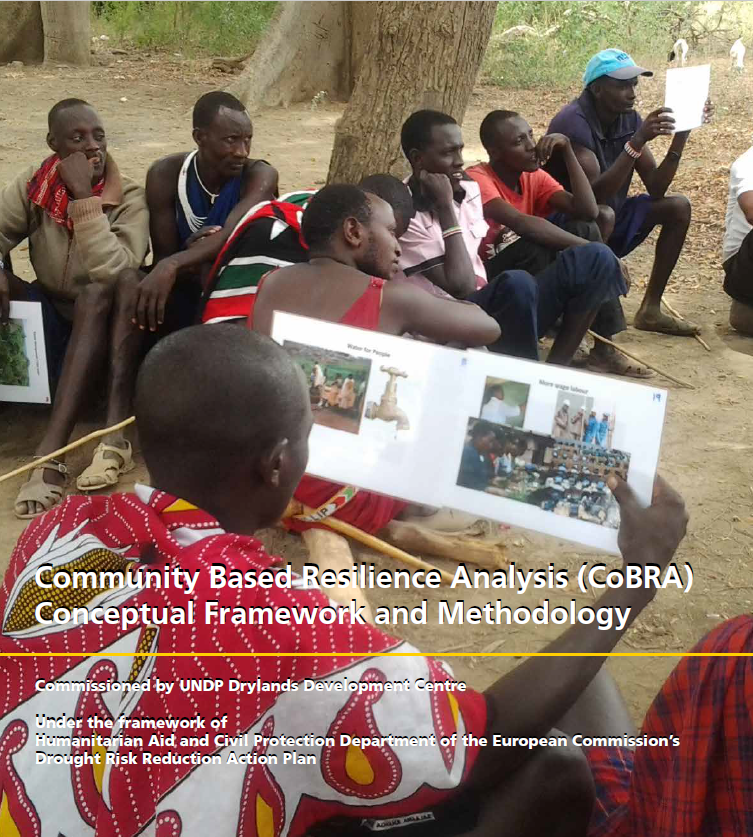Resources
74 Found

Community Based Resilience Analysis (CoBRA) – Conceptual Framework and Methodology
Document Type: Policies and FrameworksOver the last decade, the drylands of the greater Horn of Africa (HoA) have been affected by repeated drought-related disasters. The most recent drought crisis in 2010-2011 has generated a major reconsideration about how development and humanitarian actions can be better coordinated so as to minimize the impacts of shocks such as drought on lives and livelihoods. In this context, the term ‘resilience’ has gained much traction amongst Governments and other agencies working in the region. This is largely perceived as a positive step, since it helps fill in the gaps of traditional risk and vulnerability oriented approaches, extending their focus to potentials, opportunities and capacities of disaster-prone populations to cope with inevitable future shocks and stresses.

Community Based Resilience Analysis (Cobra) – Implementation Guidelines Version 2
Document Type: Policies and FrameworksThe frequency, duration and extent of natural hazards and man-made crises are on the rise at the global level. This
challenge has put the humanitarian system and resources under considerable pressure in the past decade. Climatic
shocks and protracted conflict-related stresses often take a toll governments and communities’ development efforts
in many countries
People-Centred Resilience – Working with vulnerable farmers towards climate change adaptation and food security
Document Type: ToolsWorldwide, 1.7 billion small-scale farmers and pastoralists are highly vulnerable to climate change impacts. They live on marginal rural lands characterised by conditions such as low rainfall, sloping terrain, fragile soils, and poor market access, primarily in Africa and Asia. Such farmers are vulnerable because their farms depend directly on rainfall and temperature, yet they often have little savings and few alternative options if their crops fail or livestock die.

Measuring Resilience Impact at Programme and Project Levels
Document Type: ToolsAlthough any monitoring and evaluation (M&E) system tends to focus on outputs, outcomes and even ‘value for money’, it is important to emphasise that from a participant and programming
perspective, it is impact that determines the eventual usefulness of an intervention.
Building Drought Resilience Programme (BDRP) – Environmental and Social Management Framework (ESMF) for Uganda
Document Type: Policies and FrameworksThe BDRP projects aims at strengthening the resilience of communities, to the impacts of increasingly severe and frequent climate disasters within well-managed river catchment ecosystems in Kenya, Uganda and the Eastern and Southern Africa Region. The purpose of the project is to improve the integrity and health of catchment ecosystems in priority catchments and landscapes and the adaptive capacities of communities living in them over a 7-year period (2018-2025). In Uganda, the project will be implemented in the Aswa catchment in northern part of the country, influencing the lives of 3.6 million people living within the catchment, while directly benefitting 131,000 people.
